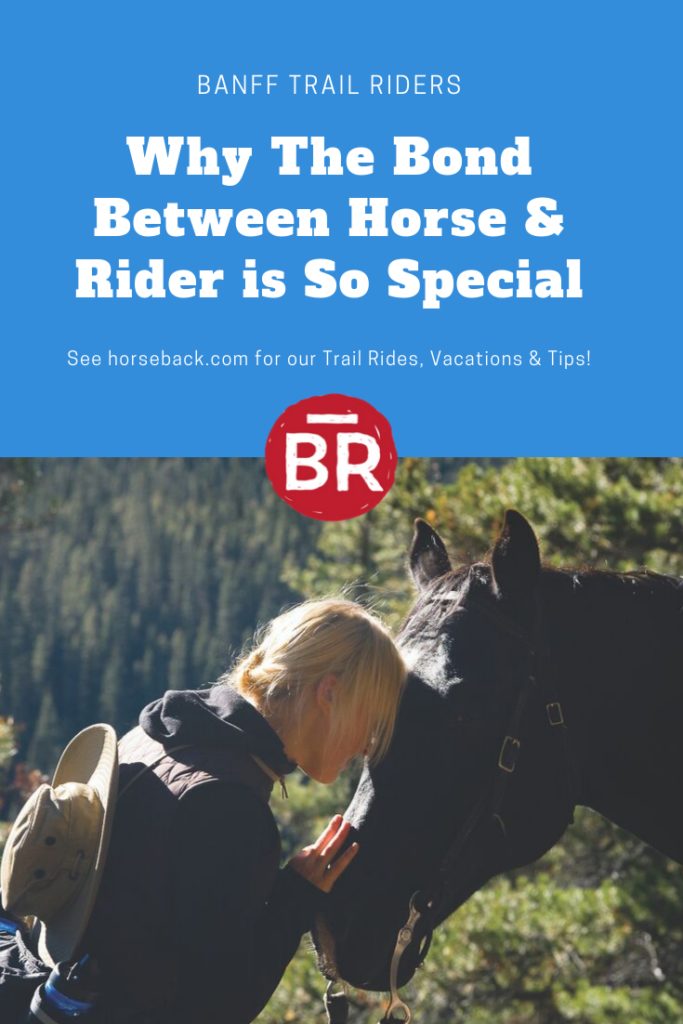The bond between a rider and their horse is a remarkable connection that is built on trust. It is not just about hopping on a horse and going for a ride, but rather a deep and intricate relationship that requires time, patience, and understanding. Through this bond, riders learn valuable lessons in trust that extend far beyond the arena. Whether you are an experienced equestrian or a beginner, this article will explore the profound connection between a rider and their horse and the lessons that can be learned along the way.
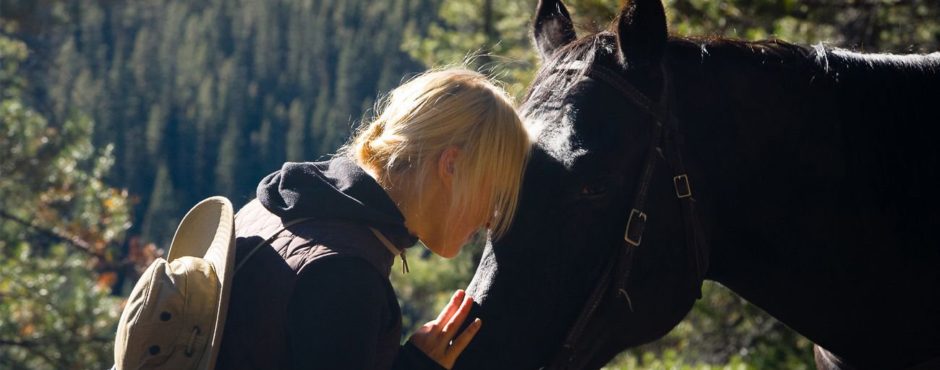
The Connection Between a Rider and Their Horse
Building a bond between a rider and their horse is essential for a successful and fulfilling partnership. It goes beyond simply learning riding skills; it involves trust, communication, understanding, and respect. Whether you are a beginner rider or someone with experience, cultivating a strong connection with your horse lays the foundation for a harmonious and productive relationship.
The Importance of Building a Bond
A strong bond between a rider and their horse creates a sense of trust, understanding, and mutual respect. By forging this connection, both the rider and the horse benefit in numerous ways. The horse becomes more responsive, willing, and attuned to the rider’s cues, while the rider gains confidence, control, and a deeper appreciation for their equine partner. Building a bond helps create a harmonious partnership and paves the way for success in various riding disciplines.
How Trust is Developed
Trust is the cornerstone of any relationship, and the rider-horse connection is no exception. Trust is built through consistent and positive interactions over time. As a rider, you need to establish yourself as a reliable and consistent presence in the horse’s life. This involves being consistent in your cues, handling, and training methods, so the horse can rely on your guidance and feel secure in your presence. Trust is also developed by respecting the horse’s boundaries, needs, and individuality.
The Role of Communication
Communication is vital in any relationship, and it is no different when it comes to the rider-horse connection. Horses are highly perceptive and rely on non-verbal cues to understand and respond to their surroundings. As a rider, it is crucial to develop clear and effective communication with your horse. This involves mastering the art of body language, using precise cues, and listening to your horse’s responses. Clear communication helps establish trust, avoids confusion, and enhances the overall riding experience.
Understanding Horse Behavior
To build a strong connection with your horse, it is essential to understand their behavior. Horses are herd animals with natural instincts and patterns of communication. By familiarizing yourself with their behavior, you can better interpret their actions, needs, and emotions. Understanding horse behavior allows you to respond appropriately, address their concerns, and build a foundation of trust and mutual understanding.
Building a Mutual Understanding
A rider-horse bond is a two-way relationship that requires effort from both parties. Building a mutual understanding involves learning to read and respond to each other’s needs and cues. It requires empathy, patience, and a willingness to adapt to each other’s strengths and limitations. By fostering a sense of understanding, you can enhance the trust, communication, and ultimately the partnership between you and your horse.
Building Trust Through Training
Training plays a vital role in developing trust between a rider and their horse. It provides a structure for learning, reinforces positive behaviors, and establishes clear boundaries. Through training, you can create a safe and supportive environment that builds confidence in both you and your horse.
The Basics of Training
Training a horse starts with establishing a strong foundation of basic skills. This includes teaching the horse to respond to simple cues, such as moving forward, stopping, turning, and backing up. Consistent and progressive training helps the horse understand their role as a partner and builds the rider’s confidence in their ability to guide and control the horse.
Using Positive Reinforcement
Positive reinforcement is a powerful tool in horse training. By rewarding desired behaviors with praise, treats, or other forms of reinforcement, you can motivate and encourage your horse to continue learning and performing correctly. Positive reinforcement creates a positive association with training and strengthens the bond between horse and rider.
Establishing Boundaries
Establishing boundaries is crucial in building trust and respect between a rider and their horse. It involves teaching the horse what is acceptable and what is not through consistent rules and expectations. Clear boundaries provide structure and guidance, helping the horse understand their role and promoting a sense of security and trust.
Developing a Consistent Routine
Consistency is key in training horses. Establishing a consistent routine helps create predictability and stability in the horse’s life, which in turn builds trust and confidence. By following a regular schedule for feeding, grooming, training, and exercise, you establish a routine that the horse can rely on, reducing anxiety and promoting a sense of security.
Overcoming Challenges and Setbacks
Training horses can be challenging, and setbacks are inevitable. It is important to approach setbacks with patience and perseverance. When faced with challenges, it is essential to reassess the training methods, adjust the approach if necessary, and seek guidance from experienced trainers or instructors. Overcoming challenges together strengthens the bond between rider and horse and fosters trust in each other’s ability to overcome obstacles.
The Power of Non-Verbal Communication
Non-verbal communication forms the basis of the rider-horse connection. Horses are highly perceptive and rely on subtle cues and body language to communicate. Understanding and effectively using non-verbal communication is key to building trust, clarity, and harmonious interactions.
Reading the Horse’s Body Language
A horse communicates primarily through body language. By observing their posture, facial expressions, ear position, tail movement, and overall body tension, you can gain insight into their emotional state and intentions. Reading the horse’s body language allows you to respond appropriately, address any discomfort or anxiety, and reinforce positive behaviors.
Interpreting Facial Expressions
Horses have expressive faces that can convey various emotions and intentions. By becoming familiar with the subtle nuances of their facial expressions, you can better understand their mood, level of attention, and comfort. This knowledge helps you adjust your approach, maintain their trust, and enhance the overall communication between you and your horse.
Mastering the Art of Listening
Listening to your horse is a crucial aspect of non-verbal communication. Horses communicate through subtle cues and signals that require attentive listening and observation. By becoming attuned to your horse’s movements, breathing, and overall energy, you can respond to their needs, address any concerns, and strengthen the bond of trust.
Establishing Clear Signals and Cues
Clear and consistent signals and cues are essential for effective communication with your horse. By using the same cues consistently, you establish an understanding between you and your horse. Using precise and purposeful signals helps reduce confusion, enhances responsiveness, and builds trust in the communication process.
The Importance of Patience
Patience is a virtue when it comes to non-verbal communication with a horse. Horses may take time to understand and respond to cues or may exhibit behaviors that require patience and understanding. By remaining patient and allowing the horse to process information at their own pace, you create an environment that encourages trust, learning, and a stronger connection.
Challenges on the Journey to Trust
Building trust between a rider and their horse can come with its fair share of challenges. Understanding and addressing these challenges is crucial for maintaining a positive and progressive relationship.
Fear and Anxiety
Both riders and horses can experience fear and anxiety, which can hinder the development of trust. Riders may fear falling or losing control, while horses may have past traumas or fears that affect their confidence. By addressing fear and anxiety through proper training, desensitization exercises, and a supportive environment, you can gradually overcome these challenges and build trust.
Past Trauma and Trust Issues
Horses that have experienced past trauma may have trust issues that require special attention and patience. These horses may need additional time, reassurance, and gentle handling to regain their trust in humans. Working with an experienced trainer or behaviorist can provide valuable guidance in helping horses with trust issues.
Resolving Conflict
Conflict is a natural part of any relationship, and the rider-horse bond is no different. Disagreements or resistance may arise during training or riding sessions. Resolving conflicts requires clear communication, consistent boundaries, and a willingness to address and understand the underlying causes. By working through conflicts with patience and respect, you can strengthen the trust and understanding in your partnership.
Dealing with Frustration
Training and riding horses can be frustrating at times. It is important to manage frustration effectively and avoid taking it out on the horse. Recognize that frustration is a normal part of the learning process and seek ways to alleviate it, such as taking breaks, seeking guidance from experienced individuals, and maintaining a positive mindset.
Creating a Supportive Environment
Creating a supportive environment is crucial for building trust and overcoming challenges. This includes providing a safe and comfortable living space for the horse, surrounding yourself with knowledgeable and supportive individuals, and fostering a positive atmosphere that encourages learning and growth. A supportive environment plays a vital role in maintaining trust and promoting a strong rider-horse bond.

The Role of Respect in the Rider-Horse Relationship
Respect is a fundamental aspect of the rider-horse relationship. It involves recognizing the horse as an individual with their own boundaries, needs, and preferences. By approaching the horse with respect, you create a foundation of trust and understanding.
Respecting the Horse’s Boundaries
Respecting the horse’s boundaries means understanding their personal space, comfort zones, and limitations. It involves approaching and handling the horse in a manner that is non-threatening and respectful. By respecting their boundaries, you create an environment where the horse feels safe, secure, and willing to trust you.
Understanding the Horse’s Needs
Just like humans, horses have physical and emotional needs. Understanding and meeting these needs is essential in building trust and maintaining a healthy partnership. This includes providing proper nutrition, access to shelter and turnout, regular exercise, social interaction, and mental stimulation. By addressing their needs, you demonstrate care and consideration, fostering a sense of trust and well-being.
Recognizing the Horse as an Individual
Each horse is unique, with their own personality, preferences, and strengths. Recognizing the horse as an individual involves appreciating their uniqueness and adapting your approach to suit their specific needs. By recognizing and honoring their individuality, you establish a deeper connection and trust in the partnership.
Empathy and Compassion
Empathy and compassion are integral components of respect in the rider-horse relationship. Understanding and acknowledging the horse’s emotions, fears, or discomfort allows you to respond with empathy and compassion. Compassion promotes trust, creates a sense of security, and strengthens the bond between you and your horse.
Respecting the Partnership
Respecting the rider-horse partnership means valuing the contributions and roles of both parties. It involves recognizing and appreciating the horse’s efforts, willingness, and trust in carrying out their responsibilities. By respecting the partnership, you foster a sense of equality, gratitude, and harmony.
Lessons in Patience and Perseverance
Building trust between a rider and their horse is not a quick process; it takes time, patience, and perseverance. It is essential to embrace the journey and understand that setbacks and challenges are opportunities for growth.
Building Trust Takes Time
Trust is not built overnight; it is a gradual process. It requires consistent and positive interactions over time to establish a solid foundation. By investing the necessary time and effort in the relationship, you allow trust to develop naturally and deeply.
Dealing with Setbacks
Setbacks are inevitable in the process of building trust. They may come in the form of training challenges, unexpected reactions, or temporary regressions. It is important to remain patient and resilient when faced with setbacks. Reflect on the possible causes, seek guidance from professionals if needed, and adjust your approach as necessary. Setbacks can lead to breakthroughs and ultimately strengthen the bond between you and your horse.
Fostering a Positive Mindset
Maintaining a positive mindset is key to navigating the ups and downs of building trust. Optimism, patience, and gratitude help create an environment that supports growth, learning, and positive interactions. Foster a mindset that celebrates progress, no matter how small, and remains open to learning from every experience.
Learning from Mistakes
Mistakes are part of the learning process. Embrace them as opportunities for growth and improvement. Recognize that both you and your horse are constantly learning, and mistakes are stepping stones towards building trust. Acknowledge and learn from your mistakes, make adjustments, and always strive for improvement.
Celebrating Small Victories
Acknowledging and celebrating small victories is crucial in maintaining motivation and enthusiasm. Every milestone achieved, no matter how small, should be recognized and celebrated. By acknowledging progress and celebrating achievements, you create a positive feedback loop that encourages further growth, trust, and connection.
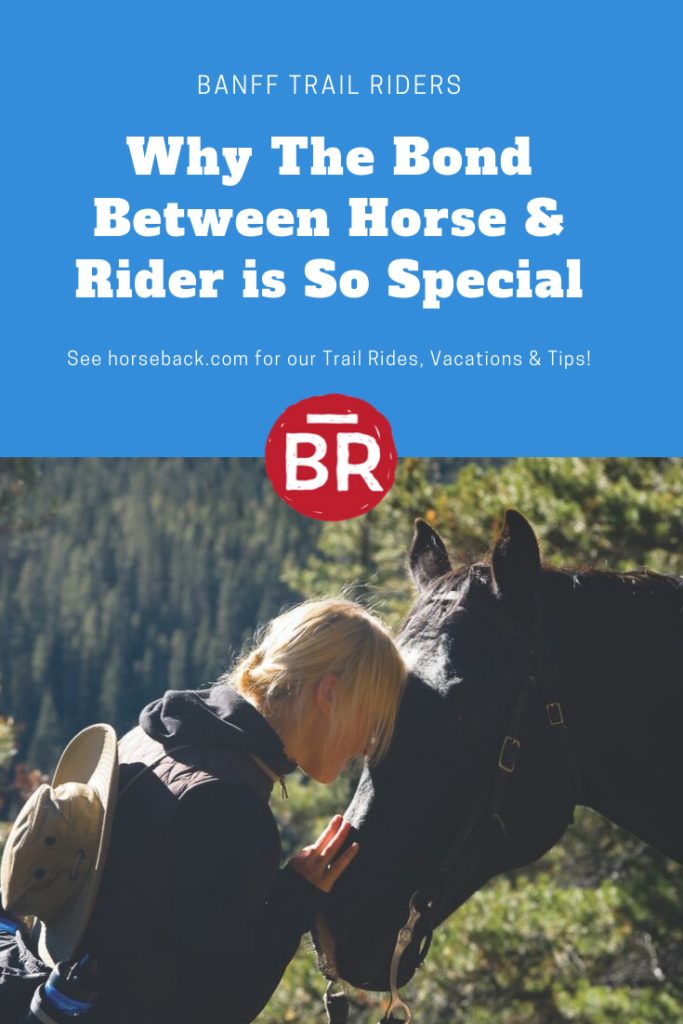
The Impact of Trust on Riding Performance
Building trust between a rider and their horse has a profound impact on riding performance. Trust enhances communication, boosts rider confidence, refines technical skills, and leads to a harmonious partnership.
Enhanced Communication and Connection
Trust lays the foundation for effective communication between rider and horse. Clear and consistent cues, combined with mutual understanding, allow for seamless communication and responsiveness. Enhanced communication leads to a deeper connection and a more enjoyable riding experience.
Improvement in Rider Confidence
Trust between rider and horse is closely intertwined with rider confidence. A trusting partnership allows the rider to feel secure, supported, and in control. The more trust that is established, the more confident the rider becomes in their ability to ride, guide, and handle the horse.
Excellence in Technical Skills
Trust enables riders to refine and excel in their technical skills. With a solid foundation of trust, riders can focus on practicing and perfecting advanced techniques, such as collection, lateral movements, or jumping. The horse’s responsiveness and willingness to work contribute to the rider’s ability to execute technical maneuvers effectively.
Achieving Harmony in Riding
Trust paves the way for a harmonious partnership between rider and horse. Both parties work together in sync, understanding and complementing each other’s strengths and weaknesses. Achieving harmony in riding results in fluidity, balance, and a seamless connection that is evident in the grace and elegance of the performance.
The Indirect Effect on Horse’s Performance
Trust has a direct impact on the horse’s overall performance. When a horse feels safe, secure, and trusts their rider, they are more likely to perform to the best of their abilities. A trusting partnership allows them to relax, focus, and exhibit their natural talents and athleticism. The horse’s performance is elevated when they have confidence in their rider and the partnership they share.
Developing Trust in Different Riding Disciplines
The process of building trust may vary slightly depending on the specific riding discipline. Each discipline brings its own set of challenges and requirements for trust-building.
Dressage and the Art of Finesse
In dressage, trust is essential for achieving precision, elegance, and collection. Developing trust involves precise communication, timing, and consistency in cues. Dressage requires a partnership built on trust and understanding, where the horse willingly engages in intricate movements and responds to subtle aids.
Jumping and Trusting the Horse’s Judgment
In jumping, trust is crucial for navigating obstacles and maintaining a safe and confident approach. The rider must trust the horse’s ability to judge distances, make split-second decisions, and handle the challenges of jumping. Building trust involves establishing a strong foundation of flatwork, exposing the horse to different jump types gradually, and ensuring clear communication throughout the jumping process.
Trail Riding and Building Confidence
Trail riding requires trust in both the horse’s ability to navigate unfamiliar terrain and the rider’s ability to handle unexpected situations. Building trust involves exposure to various trail environments, exposing the horse to different obstacles, and advancing at a pace that suits the horse’s comfort level. Trust is built through a partnership that faces challenges together and communicates effectively.
Western Riding and the Bond of Partnership
Western riding emphasizes a strong bond of partnership between rider and horse. Trust is built through the rider’s ability to communicate subtly through reins, seat, and leg aids. The rider must have trust in the horse’s responsiveness and willingness to perform intricate maneuvers, such as spins, slides, and stops. Building trust involves consistent training, establishing clear cues, and fostering a deep understanding of the horse’s individuality.
Competitive Riding and Trusting the Process
In competitive riding, trust is crucial for achieving success and handling the pressure of the show ring. Trusting the process involves building a strong foundation of training, exposing the horse to competition-like environments, and gradually increasing the level of difficulty. By developing trust in each other’s abilities, rider and horse can confidently perform at their best during competitions.
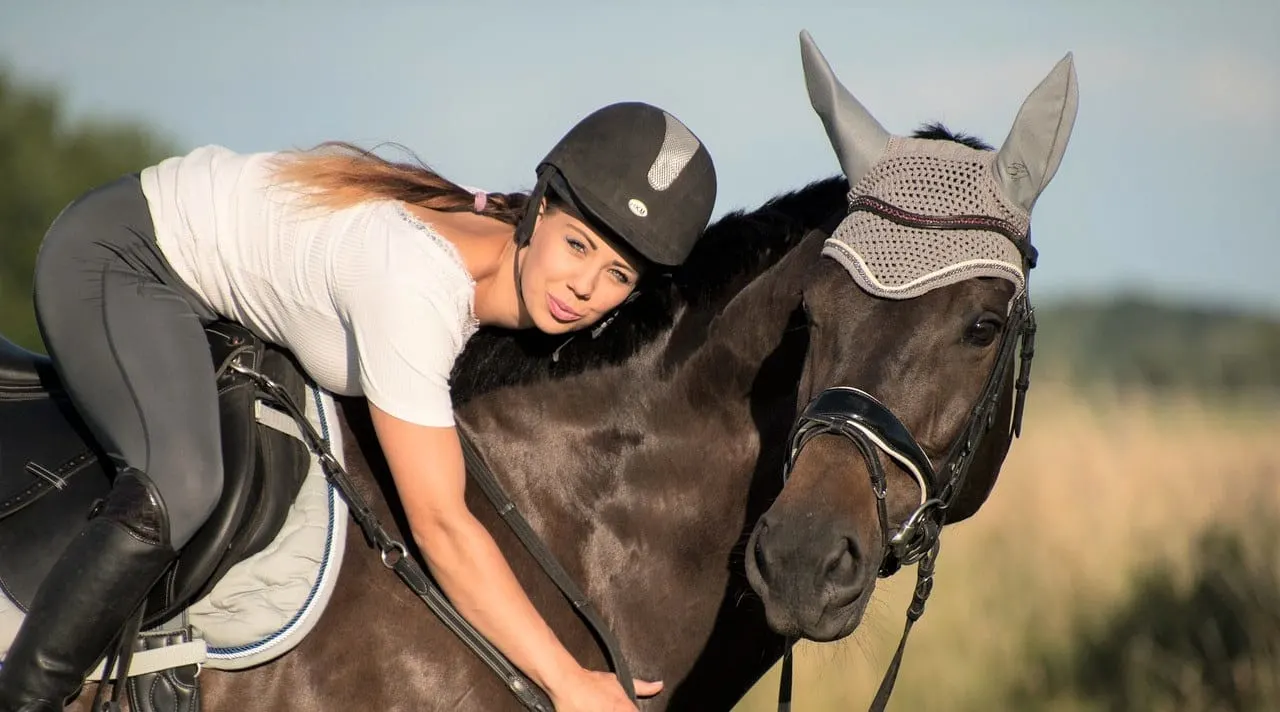
The Emotional Benefits of Trusting Relationships
Building a trusting relationship with a horse extends beyond riding; it has profound emotional benefits for both the rider and the horse.
Increased Bonding and Emotional Connection
A trusting relationship cultivates a deep bond and emotional connection between rider and horse. This connection goes beyond the physical aspects of riding and creates a sense of companionship, understanding, and mutual reliance. A strong emotional connection fosters a sense of joy, fulfillment, and partnership.
Boost in Self-Esteem and Self-Confidence
Building trust with a horse boosts self-esteem and self-confidence in riders. Overcoming challenges, developing trust, and achieving milestones contribute to a sense of accomplishment and belief in one’s abilities. Confidence gained through the rider-horse bond often extends to other aspects of life, positively impacting overall self-esteem.
Stress Relief and Relaxation
Horses have a calming and therapeutic effect on humans. Spending time with a trusted horse can provide stress relief, promote relaxation, and offer an escape from daily pressures. The peacefulness and tranquility of the barn environment, combined with the trust and connection established with the horse, create a sanctuary for mental and emotional well-being.
The Healing Power of Horses
Horses have been recognized for their healing abilities in various therapeutic practices. The non-judgmental and empathetic nature of horses can aid in emotional healing, trauma recovery, and mental health support. The trust and bonding developed with a horse can facilitate healing and personal growth in individuals facing emotional challenges.
Building Trust as a Therapeutic Tool
Building trust with a horse can be a powerful therapeutic tool. Therapeutic riding programs often incorporate trust-building exercises to help individuals develop confidence, communication skills, and emotional well-being. The process of building trust enhances self-awareness, empathy, and the ability to cultivate meaningful connections with others.
Strategies for Strengthening the Rider-Horse Bond
There are various strategies and activities that can help strengthen the bond between a rider and their horse. These strategies focus on quality time, groundwork exercises, grooming and care, building a strong foundation, and continuing education.
Spending Quality Time Together
Spending quality time with your horse outside of riding sessions is essential for building trust and connection. This includes simply being present in each other’s company, engaging in grooming sessions, hand-grazing, or quiet observation. Quality time allows for bonding, relaxation, and mutual understanding.
Engaging in Groundwork Exercises
Groundwork exercises are a valuable tool for developing trust, communication, and respect. These exercises involve working with the horse from the ground, teaching them to respond to cues, navigate obstacles, and establish clear boundaries. Groundwork exercises build trust and provide a solid foundation for riding.
Frequent Grooming and Care
Regular grooming sessions contribute to the bonding process between rider and horse. Grooming not only keeps the horse clean and healthy but also fosters a sense of touch, relaxation, and trust. The consistent physical contact builds familiarity and fosters a deeper connection.
Building a Strong Foundation
Establishing a strong foundation of basic skills and training is essential for building trust. This includes teaching the horse to respond to cues, leading, backing up, standing quietly, and respecting personal space. A strong foundation sets the stage for more advanced training and enhances the trust between rider and horse.
Continuing Education and Learning
Continuing education and learning are key to strengthening the rider-horse bond. Attending clinics, workshops, or lessons with experienced trainers or instructors provides opportunities for growth, new techniques, and insights. The more knowledgeable and skilled the rider becomes, the more they can confidently guide and communicate with their horse, reinforcing the bond.
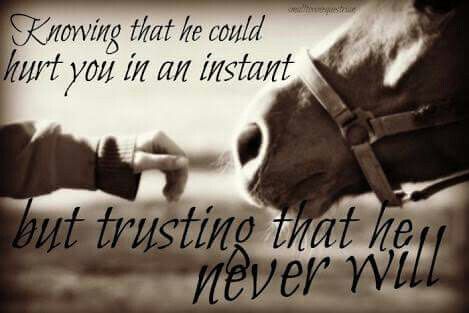
Conclusion
The bond between a rider and their horse goes beyond the physical act of riding. It is a relationship built on trust, communication, understanding, and respect. Building and nurturing this bond is a continuous journey that requires patience, perseverance, and a deep appreciation for the individuality of both rider and horse. Trusting relationships bring joy, fulfillment, and emotional well-being to both the rider and the horse, creating a partnership that excels in the saddle and thrives in all aspects of life.
